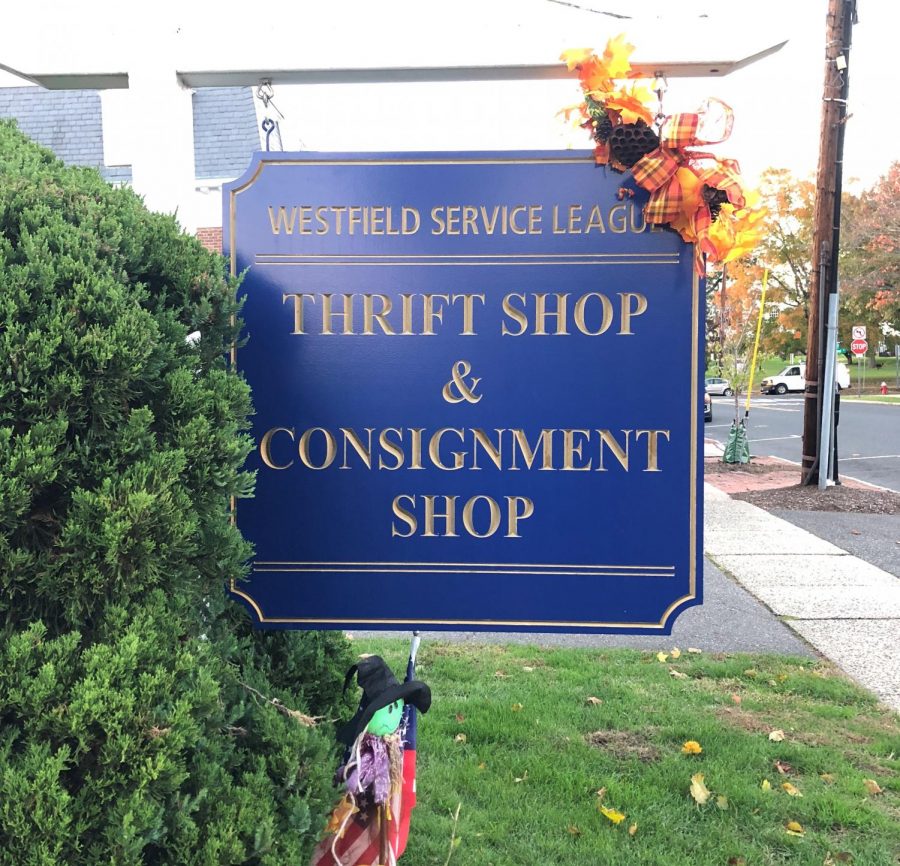From frugal to fashion forward
Photo Sammy Salz
Before you toss that t-shirt, just remember: where you may see worn and out-of-style, others see opportunity. Instead of the garbage bin, head over to your local donation bin, where your old clothes can be given new life.
Years ago, thrifting was most commonly associated with low income, and was essentially considered to be anything but trendy. Chances are if someone could afford to shop elsewhere, they would never have stepped foot inside of their local thrift shop. However, the secondhand style has emerged as a prominent force in America’s pop culture scene within the last decade.
Suddenly, big-name artists such as Macklemore and fashion-forward social media influencers began to portray thrifting in a new light, making it popular with the younger generations rather than just with coupon-clippers.
In Westfield, it’s not uncommon for teens to browse the racks of the several thrift stores located downtown, with shops such as Midtown Authentic and the Westfield Service League Thrift Shop offering unique and interesting finds for customers of all demographics.
Today, thrifting allows high school and college students to run their own small businesses through social media, giving secondhand shopping a truly modern flair. The young entrepreneurs running these businesses do the hard work for the buyer, sorting through racks of clothing at their local Goodwill or Plato’s Closet to find eye-catching vintage or handmade items that they can sell to their followers. After a quick Instagram post, their followers are able to bid on these items, which are eventually shipped directly to the highest bidder. Oftentimes, kids as young as high school freshmen are the minds behind these massively-popular Instagram clothing resale accounts, and thus, are able to discover their passion for business at an early age.
Elsie, age 15, runs the account @groovy.thrifts.co on Instagram, amassing a total of 11,600 followers over four months of activity. “This summer I wanted to get a job. I wanted to earn some money but I also wanted to have fun and not [have to] commit [to] work certain hours of the day,” says Elsie. “I’ve also really wanted to do my part in helping the environment but didn’t really know a good way to until this opportunity presented itself.”
Much like Elsie states, ever-growing concern for the state of our environment has been a major contributor to the rise in popularity of thrifting. By shopping secondhand, the consumer allows an item of clothing to get its full wear rather than end up in the landfill after a few uses. Most importantly, by allowing customers to purchase designer items at low prices, there is no longer a need to support fast-fashion companies (most notably Zara, Forever 21, and H&M) that have become notorious for their lack of environmental concern.
According to edgexpo.com, the clothing and textile industry is one of the largest polluters in the world, just second to the oil industry. Because the designer or handmade goods typically found at thrift shops are generally of a much higher quality than those from fast-fashion brands, their life almost always transcends the use of one owner, which is why many are starting to turn to Goodwill or Poshmark to do their shopping rather than the nearest mega mall.
Not only are these fast fashion companies causing great harm to the environment, but they are also becoming notorious for the unethical treatment of their workers. In 2017, Director of Los Angeles’ Garment Worker Center, Maria Nuncio found that 40% of L.A. garment factories had blocked exits. In addition, 80% of workers in such factories reported receiving no training, and another 40% reported sightings of rats and roaches during work.
“Many people don’t realize that [clothes from] these fast fashion brands are made by workers who face horrific conditions in the factory they work in, such as being paid lower than a living wage,” explains WHS Junior and avid thrifter Sean Marner. “These people have no choice, as they have families to take care of and support, so the businesses keep their worker conditions the same. Super cheap clothes are almost always made in these unethical conditions.”
With the rise of an increasingly conscientious generation and the ever-growing exploitation of the fast fashion industry, the thrifting trend does not show signs of dwindling. In recent years, apps such as Poshmark and Depop along with Instagram have made thrifting even more accessible to a younger audience, allowing money to fall into the hands of those who care about the betterment of the fashion industry instead of out-of-touch corporations.
College student Kaylen Cuilty, owner of the Instagram account @thrifted.and.gifted, has managed to keep her business thriving even when swamped with school work, and shares her passion for sustainability with almost 7,000 followers. “My business has been performing way better than I ever could have imagined,” said Cuilty. “On average, for every six items I post, my net income is at least $100. [Most items] I post get a bid and get bought.”
Undoubtedly, this emerging network of passionate thrifters has proven that sustainable fashion is, quite fittingly, a sustainable industry. While your clothes may travel to other closets, the secondhand style is certainly here to stay.

